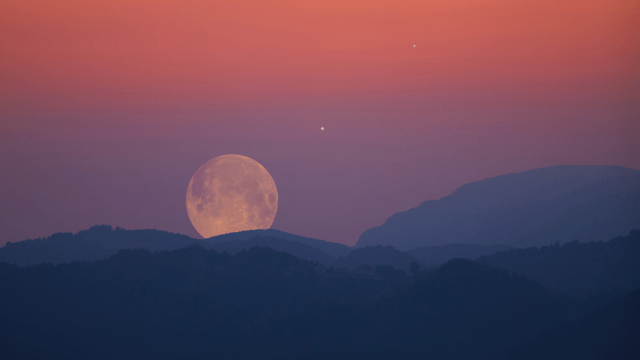In the current era of spaceflight, the Moon is arguably the place to be. International space agencies and private companies alike are racing to the lunar surface, hoping to establish a permanent presence on Earth’s natural satellite that would propel them to farther celestial pitstops. All that increased activity on the Moon may affect the unique radio silence on the lunar far side, an ideal location for radio telescopes to pick up faint signals from the cosmic past.
This week, the International Academy of Astronautics (IAA) held the first Moon Farside Protection Symposium in Italy to advocate for preserving radio silence on the far side of the Moon. The symposium hopes to raise awareness about the threat facing the far side of the Moon and develop approaches to shielding it from artificial radio emissions.
It’s a noble cause, but the quiet days of the far side are drawing to a close, whether scientists like it or not. We’re entering into a phase in which constant communication with our assets in the lunar environment—astronauts included—is becoming crucial.
The quiet place
The far side of the Moon is always facing away from Earth, therefore it’s shielded from Earth’s radio chatter, or human-made frequencies. That makes it the perfect spot to set up a radio telescope, since it’s close enough to Earth while not being constantly bombarded by Earthly interferences that weaken the telescopes on the ground or in orbit around our planet.
NASA has shown interest in using the lunar radio silence, proposing an ultra-long-wavelength radio telescope inside a crater on the far side of the Moon. The Lunar Crater Radio Telescope is designed to observe the universe at frequencies below 30 megahertz, which are largely unexplored by humans since those signals are reflected by the Earth’s ionosphere, according to NASA.
At those low frequencies, radio telescopes on the Moon can detect near-Earth objects approaching our planet before other observatories, it can search for signals of alien civilizations, and study organic molecules in interstellar space.
“This Symposium is thus designed to sensitize and openly involve the global scientific, political, and industrial community on the need to preserve radio silence on the Farside at frequencies relevant for scientific purposes,” IAA wrote in a statement. “It aims to prevent future missions from irreversibly compromising the current condition of radio quietness.”
Bring the noise
As more missions head towards the Moon, however, that perfect silence is increasingly being compromised.
Earlier this week, for example, China launched a satellite to relay communication between ground operations on Earth and an upcoming mission on the far side of the Moon. The satellite, Queqiao-2, is the first of a constellation of satellites that China hopes to deploy by 2040 to communicate with future crewed missions on the Moon and Mars.
As part of its Artemis program, NASA is aiming to build the Lunar Gateway, a space station designed to orbit the Moon to support future missions to the lunar surface and Mars. In advance of this, a NASA-funded cubesat, called CAPSTONE, has entered into a unique halo orbit to demonstrate the stability and practicality of this trajectory for future lunar missions; the cubesat is paving the way for sustainable, long-term lunar exploration and, crucially, communications. Indeed, CAPSTONE marks the beginning of something big—establishing a permanent communication link between Earth and lunar assets, and ensuring the steady, uninterrupted flow of data.
NASA and its Chinese counterparts have eerily similar plans for lunar exploration, and the Moon is currently a ‘free-for-all’ with no regulations set in place as to who can own our dusty orbital companion.
In other words, things are about to get real loud out there as far as radio transmissions are concerned. Astronomers are understandably worried, fearing that this may compromise future observations of the cosmos, and advocating that perhaps it’s time to put forward some regulations to protect the Moon and other celestial objects. This may or may not be possible, and it certainly won’t be easy.
